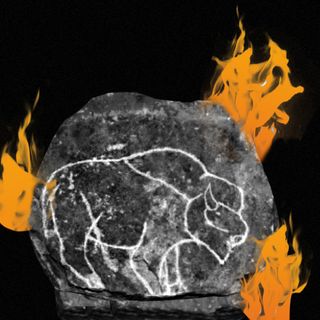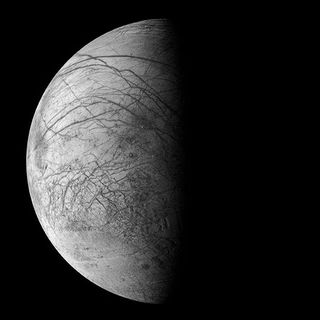
A New Theory Argues Time May Not Exist At All — but That’s Not a Bad Thing
Physicists say we need a new theory to explain the universe, and this framework may not feature time at all.

As we speak, there’s a crisis playing out in physics. Does time exist? And if not, how do we explain our universe? It’s an absurd notion to question the very fabric of our reality; the clock, the calendar, the humdrum of our lives has left time in tiny fragments. These fragments make us, and we have come to be at peace with that.
The proposition is this: we need a radical perspective of what it means to exist. Take this thought experiment: do chairs and tables exist? Yes, even though no theory in physics would validate their existence. They exist because they “emerge from an underlying physics of particles whizzing around the universe.” Time, on the other hand, may emerge out of nothing fundamental in the universe. We are still unclear about how time emerged, so how can we assume it exists?
In other words: time may not exist as a critical component of the laws of physics; but it could still exist in our world as a social construct.
“…developments in physics suggest the non-existence of time is an open possibility, and one that we should take seriously,” wrote Sam Baron, an associate professor at Australian Catholic University, in The Conversation. Baron, along with his colleagues Kristie Miller and Jonathan Tallant, argues that the new physical frontier would question the very existence of time in our lived realities.
There’s a bit of physics, math, and a whole lot of existential moorings. We measure our world on the basis of two physical theories: general relativity and quantum mechanics. According to a new theory proposed by some researchers, the current ways of understanding our universe are at odds with each other; leaving space for a new physical theory to emerge. This understanding would be a mix of physics and philosophy; where the question of math also becomes a question of more abstract ideas about existing and what it means to exist. That time is an impossibility in a universe is not an unthinkable notion — at least in the physical treatise of existence.
Sci-fi movies and sitcoms have made flighty references to notions of quantum mechanics and general relativity; they are that embedded in our understanding of the universe. The fun part comes when they are juxtaposed together — scientists have observed these two are contradictory to each other. While quantum mechanics talks about “how things work in the incredibly tiny world of particles and particle interactions,” Baron notes, “general relativity describes the big picture of gravity and how objects move.”
But how does gravity work at a very micro scale, one that applies to the miniature world of particles? The famous Schrödinger’s experiment is one such tale of this paradox; without going into too many details, the conundrum in quantum mechanisms is the cat we cannot see is both alive and dead at the same time.
The exact nature of this conflict remains widely debated. “We’re actually living through one of the greatest such battles: the standard model of physics versus the quantum model of physics. And depending on how you look at the quandary, time may not exist at all,” as writer Caroline Delbert explained.
Related on The Swaddle:
How Emotions Alter Our Understanding of Time
But this leaves room to introduce another way of understanding the universe: a theory called “quantum gravity.” Of course, introducing a new framework of our reality is no mean feat. Previous attempts at bridging this rift include the string theory or the loop quantum gravity (that the fabric of space and time is made of a network of extremely small discrete loops). Both fell short in their own ways. The need still remained to talk of a theory that could piece together our universe without latching on to contradictions.
The interesting thing with the loop quantum gravity theory was there was a curious absence of time as a fundamental concept of reality. In other words, these forays into alternative ways of living were bold and wild enough to suggest we could live in a world where time wasn’t woven into the fabric.
And such a physical theory, if proven, would mean that time does not exist.
“The math part is simple, at least,” Delbert noted. “If theories like loop quantum gravity don’t take time into consideration, then time, as a variable, simply doesn’t appear in the work. Think of a three-dimensional set of coordinates like (x, y, z) where you remove the ‘z’ portion. You just have a different amount of math to do now, with a different outcome, and arguably ‘z’ no longer exists.”
Removing time out of the equation feels bizarre. But this is not a bad thing, per se. Let’s say time doesn’t exist — one could argue this hypothesis does nothing while pursuing the semantics of what makes our universe. “We suggest the discovery that time does not exist may have no direct impact on our lives, even while it propels physics into a new era,” Baron argued. Arguably, people are looking for a sense of agency, and time affords that. The non-existence of time doesn’t have to mean people lose agency — it’s entirely possible to reconstruct it.
There is a wind of uncertainty blowing at all levels. If time, the one thing that has anchored humanity since the dawn of civilization is eliminated, what remains? Physics also speaks of “causation,” the idea that an event brings about another. This notion is more circular, defies any absolutes, and thrives in the abstract.
This marriage of philosophy and physics remains limited to theoretical assumptions and intellectual fodder. But it is always humbling to wonder who we are, without the one thing that gives us order and agency.
Saumya Kalia is an Associate Editor at The Swaddle. Her journalism and writing explore issues of social justice, digital sub-cultures, media ecosystem, literature, and memory as they cut across socio-cultural periods. You can reach her at @Saumya_Kalia.
Related


Why Food Tastes Bad on Airplanes
